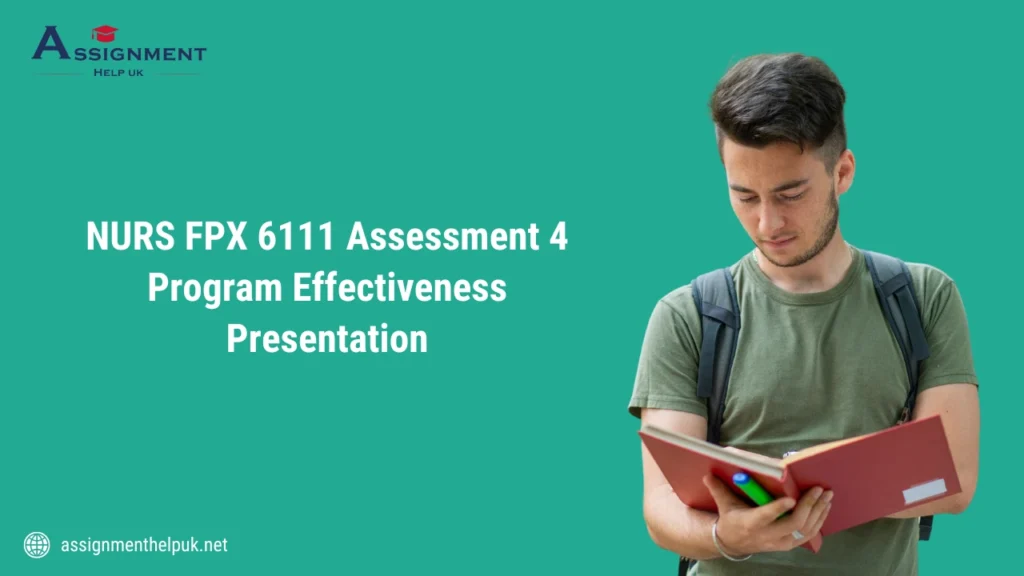NURS FPX 6111 Assessment 4 Program Effectiveness Presentation

Table of Contents
NURS FPX 6111 Assessment 4
Philosophical Perspectives to Evaluation
DIKW Theory
Data, information, knowledge, and wisdom (DIKW) theory is responsible for data collection to gauge information. That information is in comparison to the proof to derive knowledge and have wisdom about certain topics. DIKW theory is associated with data, information, knowledge, and wisdom for nursing informatics. The main purpose is to gain more knowledge about the use of advanced technology in terms of healthcare services.
Benner’s Model
This specific model considers learners as advanced beginners, novices, competent, proficient, and experts. It identifies the learner’s capability to understand, learn, and remove issues based on their competency in nursing informatics. This model reinforces the idea that nurses with not enough knowledge of nursing informatics must be empowered with knowledge and skills for the job. This is how you deal with assessment and evaluation in nursing education as you adopt the technology.
NURS FPX 6111 Assessment 4 at Capella University
There are two main types of assessments: summative assessment and formative assessment. Summative assessment is utilized to assess the learner’s skills after completing the course in nursing informatics. Formative assessment is used to identify the learner’s expertise in using modern tech with associated healthcare services.
Support the Explanation by Evidence
DIKW Theory, Benner’s Model, summative assessment, and formative assessment share the same purpose. They are designed to extract information about the use of IT connected to healthcare services. All of this combined in the nursing informatics course assessment aims to offer students information for the uses of AI, EMR, automated IV pumps, and remote monitoring services.
Program Evaluation Process
The program evaluation process in nursing informatics goes like this:
Assessment
Assessment is where you collect information from students through survey forums and questionnaires. Students’ identities are kept anonymous during this step. It is further ensured that information is collected through a proper channel.
Diagnosis
The data is compiled to turn it into reliable information. Using that information, the course is designed in a way that technological skills can be developed. This is how effective healthcare services are maintained well.
Planning
The information from the diagnosis is used to develop planning. The course evaluation template in this step – the course definition and alignment table – is here to show if the course is good enough to offer quality and safe care to patients.
Implementation
Certain changes are made in the course to make sure that any setbacks are removed and that the course succeeds in advancing the nurse’s psychomotor, cognitive, and affective domains.
Evaluation
Evaluation is done by distributing survey forums and questionnaires. This evaluation plans to assess if the changes implemented are advantageous to the present course in nursing informatics. This whole program evaluation process is designed to ensure that students have good enough knowledge and patients can be left in their care.
Conclusion
To make sure that the patients receive quality healthcare services, this assessment is necessary. Nurs Fpx 6111 assessment 4 program effectiveness presentation has done wonders ever since it became operational. The problem is that sometimes there are shortcomings in the process but that is not something to be worried about.
If we keep following the precise evaluation process along with the philosophical approaches, then these measures can be successful. However, if we do not follow everything in precision, then we should not hope for quality in healthcare services. That means losing the reputation of your institution as you fail to gain everyone’s trust.
References
Dammann O. (2019). Data, information, evidence, and knowledge: A proposal for health informatics and data science. Online Journal of Public Health Informatics, 10(3), e224. https://doi.org/10.5210/ojphi.v10i3.9631
Hancock, P. A., & Volante, W. G. (2020). Quantifying the qualities of language. PloS One, 15(5), e0232198. https://doi.org/10.1371/journal.pone.0232198
Paul, F., Abecassis, L., Freiberger, D., Hamilton, S., Kelly, P., Klements, E., LaGrasta, C., Lemire, L., O’Donnell, E., Patisteas, E., Phinney, C., Conwell, K., Saia, T., Whelan, K., Wood, L. J., & O’Brien, P. (2019). Competency-based professional advancement model for advanced practice RNs. The Journal of Nursing Administration, 49(2), 66–72. https://doi.org/10.1097/NNA.0000000000000719
Tseng, L. P., Hou, T. H., Huang, L. P., & Ou, Y. K. (2021). Effectiveness of applying clinical simulation scenarios and integrating information technology in medical-surgical nursing and critical nursing courses. BMC Nursing, 20(1), 229. https://doi.org/10.1186/s12912-021-00744-7
Zann, A., Harwayne-Gidansky, L., & Maa, T. (2021). Incorporating simulation into your plan-do-study-act cycle. Pediatric Annals, 50(1), e25–e31. https://doi.org/10.3928/19382359-20201213-01
Top Grades Guarrantied




